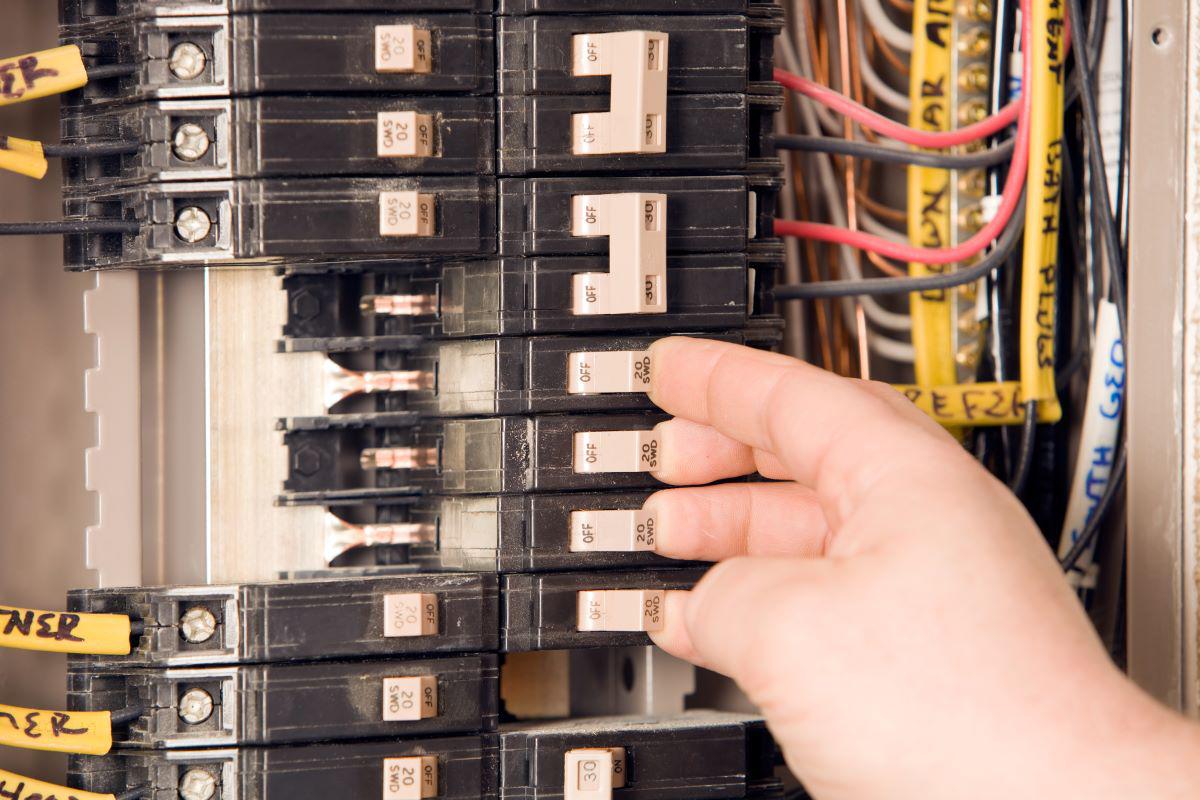A single breaker trip is inconvenient. A second one is annoying. By the third or fourth trip, you're flipping switches with one hand while Googling causes with the other. Electrical systems can be touchy, but they're not random. Whether you're running too many appliances or have faulty wiring, the patterns always tell a story. At some point, those flips start pointing toward a deeper issue—one that Mister Sparky® is fully equipped to help you solve.
Your Circuit Is Overloaded, and It's Trying to Warn You
When your breaker keeps tripping, the first thing to do is figure out what’s sharing that circuit. Breakers shut off when the current passing through them goes over their rated limit. So if you have a microwave, toaster oven, and space heater running on the same 15-amp line, that’s more than it was designed to handle. Even everyday use can add up if too many outlets are tied together or if multiple power strips are plugged in. You might not notice anything until you try to vacuum or make toast while something else is already running—then the breaker flips. This isn’t a short circuit; it’s your system protecting itself from excess demand. If this keeps happening in the same area, it’s a sign the circuit simply isn’t sized for today’s usage.
Short Circuits Don’t Announce Themselves Quietly
Overloads happen gradually, but short circuits usually stop you in your tracks. If a hot wire touches a neutral or grounded surface, electricity rushes through all at once. That surge causes an instant breaker trip, sometimes with a pop, spark, or burnt smell. Shorts are more serious than overloads because they point to damage, either in the wiring or inside an appliance. A chewed cord, frayed wire, or failing outlet can all trigger a short. If a breaker flips back off immediately after being reset, leave it off until it’s inspected. Repeated resets only increase the risk of heat or fire behind the wall.
Ground Faults Trigger Trips in Wet Areas
If your kitchen, bathroom, laundry room, or outdoor outlet keeps tripping, a ground fault may be the culprit. These happen when electricity leaks to ground through water, a person, or damaged insulation. That’s why GFCI outlets exist: they detect the imbalance and shut off power in a fraction of a second. Sometimes, even a damp plug or condensation near the outlet can be enough to trip a GFCI. If a breaker tied to a GFCI trips again after you reset it, try unplugging nearby appliances first. If it still won’t hold, the issue could be in the wiring, moisture intrusion, or a faulty breaker.
Old Breakers Don’t Always Work as They Should
Your panel is only as reliable as the breakers inside it, and like any mechanical part, they can wear out. Springs weaken, contacts corrode, and eventually, they may trip inconsistently. A breaker that trips too easily can be frustrating, but one that fails to trip when it should is far more dangerous. If the same breaker has been resetting more frequently, and you’ve ruled out overloads or appliance problems, the breaker itself may need to be tested or replaced. Loose switches, breakers that won’t reset properly, or panels older than 20 years all warrant a closer look by a licensed electrician.
Appliances Can Be the Hidden Culprit
Sometimes the breaker isn’t the issue at all—it’s what’s plugged into it. A fridge, AC unit, dishwasher, or water heater with failing components can draw more power than expected or feed fluctuations back into the circuit. If a certain breaker trips whenever a specific appliance runs, that appliance should be checked. Motors also cause high startup demand. A vacuum, sump pump, or blender may pull a big spike of current when it kicks on. Breakers are designed to handle normal inrush, but if the circuit is undersized or the motor is failing, it can trip. Heating appliances with damaged elements or faulty thermostats can also short out and shut a breaker down.
Too Many Add-Ons Throw Off the Balance
Most homes today have far more electronics than when the wiring was designed. TVs, game consoles, routers, phone chargers, air purifiers, heated blankets—the list adds up. Each may use a small amount of electricity, but combined, they can overload a circuit. Bedroom and living room trips are easy to dismiss, but overloading outlets or power strips can overheat connections and wear down insulation. If you’ve added a media center or home office to a space, you may simply need more circuits.
Wiring Issues Build Slowly, Then Snap
The older the wiring in your home, the more likely it is to struggle with modern electrical loads. Aluminum wiring expands and contracts more than copper, which can loosen connections over time. Knob-and-tube systems, still found in some older houses, were never meant for today’s demands. Even modern copper wiring can become unsafe if rodents chew through the insulation or if original connections weren’t tightened correctly. Sometimes the problem only shows up in certain conditions—like wires in an attic overheating on hot days or corroded connections in damp crawl spaces. These issues build gradually until they finally arc, trip, or fail.
When Your Breaker Panel Is the Problem
Sometimes the issue isn’t just one breaker, but the entire panel. Panels installed decades ago may not meet today’s safety standards, and some brands, such as Federal Pacific or Zinsco, are known to have dangerous failure rates. In these cases, replacing the panel—not just the breaker—is the safest solution.
Get Your Home’s Electricity Inspected
Your breaker panel is designed to protect you. Frequent trips are a warning sign, not just an inconvenience. A professional inspection can uncover hidden shorts, overloaded circuits, or worn-down breakers before they create bigger hazards. Mister Sparky® handles electrical inspections, panel replacements, and wiring repairs with care and precision. Call Mister Sparky® today to schedule an electrical panel inspection, and we’ll help you stop flipping switches and start fixing the root of the issue.















